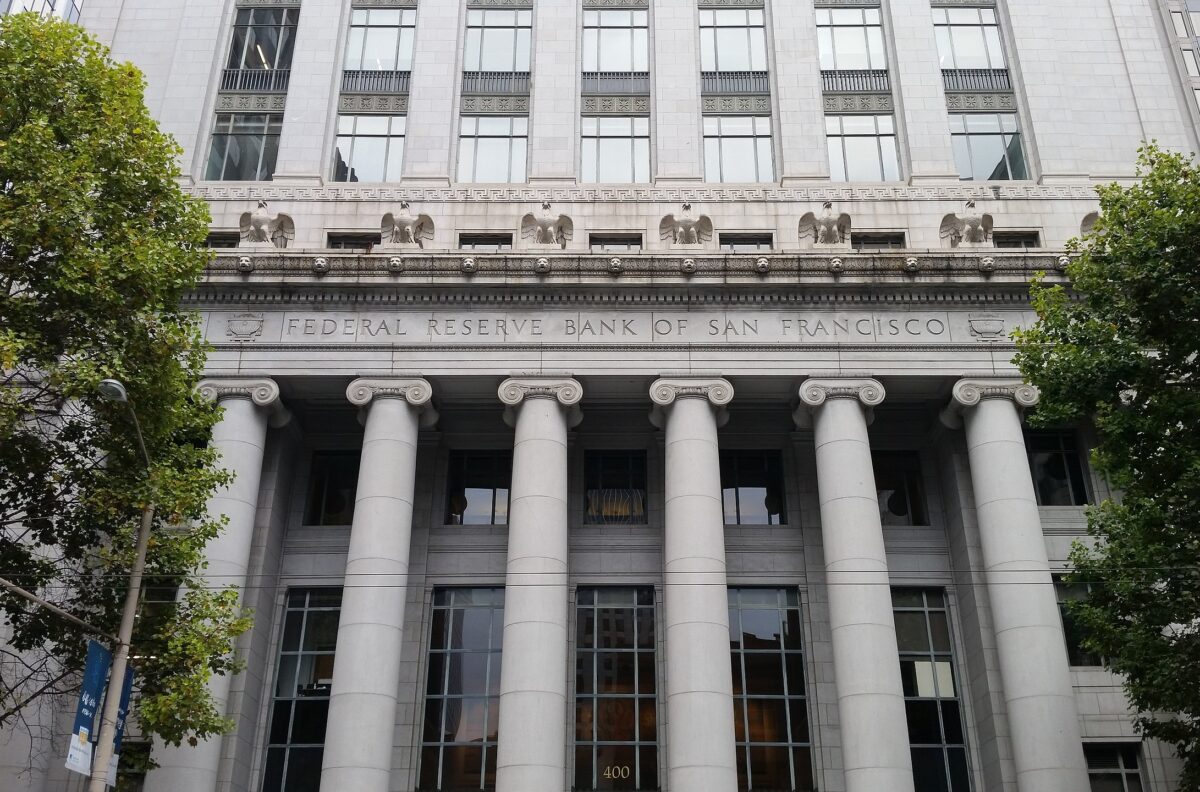Federal Reserve quietly injects $125 billion to ease bank liquidity strain — Analysts debate ‘stealth easing’ move

Federal Reserve
The U.S. Federal Reserve has injected approximately $125 billion into the country’s banking system over the past five days — its largest short-term liquidity operation since the early stages of the COVID-19 pandemic in 2020.
Data from the Fed’s overnight repurchase (repo) operations show that the central bank’s single biggest liquidity boost — about $29.4 billion — was carried out on October 31, 2025. The move comes amid a steady decline in bank reserves, now at around $2.8 trillion, the lowest level in more than four years.
Repo operations allow financial institutions to exchange U.S. Treasuries for cash overnight. The system helps banks meet short-term funding needs and stabilizes interbank lending rates when liquidity tightens.
While the Federal Reserve continues to publicly emphasize its commitment to maintaining a “restrictive” stance to curb inflation, some analysts view these liquidity injections as a sign of what they describe as “stealth easing.”
A Balancing Act Between Inflation and Stability
Chair Jerome Powell has consistently reaffirmed the Fed’s focus on inflation control, but analysts suggest that the recent actions indicate a more cautious, behind-the-scenes attempt to maintain stability within the financial system — especially among smaller banks under stress from higher borrowing costs.
According to several economists, this dual strategy reflects the Fed’s pragmatic approach: projecting firmness on inflation while quietly ensuring liquidity does not dry up. The move has reassured some market participants, who view it as a protective measure against potential financial disruptions.
Market Reaction and Rate Cut Expectations
Market sentiment has shifted following the liquidity boost. Traders now estimate a 67% probability that the Federal Reserve will cut interest rates by 25 basis points in December, according to the CME FedWatch Tool. Another 22% foresee deeper cuts by early 2026, while roughly one-third of traders expect rates to remain unchanged.
The timing of the repo injections, coinciding with the Fed’s plan to halt balance sheet runoff on December 1, is being interpreted by many as a signal that the tightening cycle could be nearing its end.
Impact on Cryptocurrency and Risk Assets
The injection of fresh liquidity has also captured the attention of the crypto market. Historically, higher liquidity levels tend to support Bitcoin and other digital assets. As of Tuesday, Bitcoin traded around $104,000, reflecting a 3.4% daily dip and a 16% decline over the past month.
Analysts note that while repo operations are not equivalent to full-scale quantitative easing, they can temporarily ease funding pressure and improve sentiment — potentially offering a short-term lift for risk assets.
Crypto analysts, including AI-driven research platform Grok, have suggested that such liquidity expansions have often preceded rallies in Bitcoin, given the currency’s perception as a hedge against fiat devaluation.
Analysts Remain Divided
Still, not all observers interpret the move as a pivot toward monetary easing. Some experts argue that the injections merely address temporary funding imbalances, rather than signaling a policy shift.
Andy Constan of Damped Spring Advisors cautioned that the development should not be overinterpreted: “If reserves are truly scarce, the Fed may need to act more aggressively — but for now, this appears to be a short-term fix.”
Whether the recent injections mark the start of a subtle policy transition or simply a technical adjustment, the Fed’s actions underscore a delicate balancing act: maintaining control over inflation while ensuring liquidity remains sufficient to prevent systemic strain.
FAQ Section
Q1: What is a repo operation?
A repo (repurchase agreement) allows banks to exchange government securities for short-term cash, typically overnight, helping manage temporary funding shortages.
Q2: Why did the Fed inject $125 billion?
The injection was aimed at easing liquidity stress after bank reserves dropped to their lowest level since 2021.
Q3: Does this mean the Fed is ending its tightening policy?
Not officially. The Fed still emphasizes inflation control, though analysts view the injections as signs of behind-the-scenes easing.
Q4: How might this affect Bitcoin and other assets?
Higher liquidity usually benefits risk assets, including cryptocurrencies, as investors anticipate easier funding and higher inflation expectations.
Q5: Is a rate cut likely soon?
Traders currently expect a 67% chance of a rate cut in December, though the decision will depend on inflation data and broader economic conditions.




